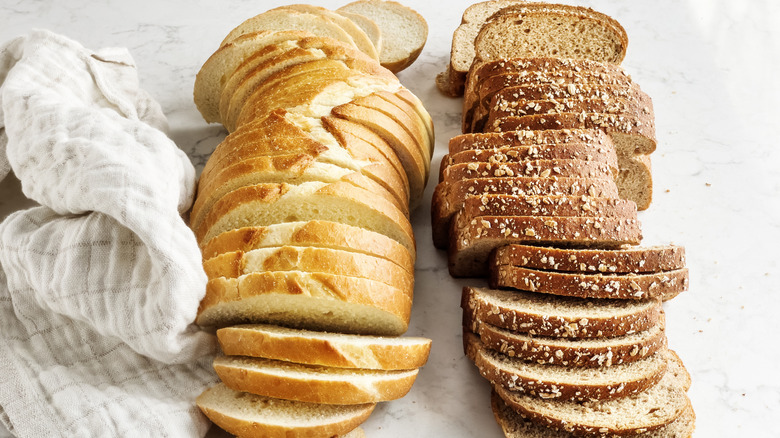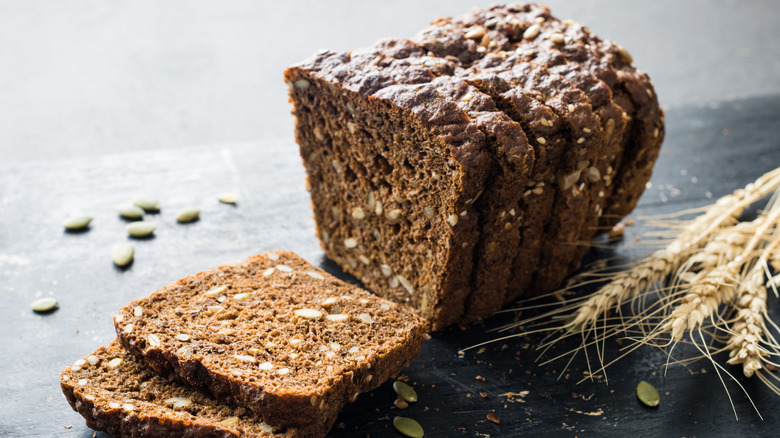What Really Makes White And Wheat Bread Different
If you're like us, you may have mistakenly picked up wheat bread instead of white while grocery shopping on more than one occasion. This may have also raised the question of whether there's actually a difference between the two. Simply put: there's quite a distinction.
While both use wheat berry flour in their baking process, whole wheat bread utilizes all aspects of the wheat berry's nutritional physiology — bran crust, the inner germ layer, and the starchy endosperm. Contrastingly, white bread only contains the endosperm which plays into how the two taste, as well as their texture and nutritional content.
Looking at their profiles, whole wheat bread tends to have a denser texture and earthy, nutty flavor. Although there are ingredients to avoid when buying whole wheat bread, like high fructose corn syrup, it does hold more fiber, B vitamins, and minerals like zinc. White bread is processed with a whitening agent, providing its color and without wheat's germ. This makes it fluffy, light and much milder in its taste. Of course, this also means that it has less nutritional value than wheat, but that same refining process is what grants white bread with a comparatively longer shelf life.
There's no single answer for choosing between white and wheat bread
Not all bread is created equal. As far as health goes, it's best to be guided by your individual dietary needs. While wheat tends to be more rich in nutritional value, white bread can be the better choice for someone with digestive issues as it's soluble fibers make it easier on the stomach. At-home bakers may also opt to make their own bread as that provides more control over its ingredients. Therefore, a quintessential sourdough is great choice for its versatility, and can be made gluten-free.
Interestingly, rye bread is an underrated choice and has several benefits. It contributes positively to cognitive functions, helps improve moods, glucose tolerance, and insulin response. Additionally, buckwheat hopped on Whole Foods' hot trends in 2024 as a gluten-free bread alternative. Although it's not actually a grain, the rhubarb relative acts like a cereal and is considered a superfood for many reasons. Buckwheat caters to a gluten-free diet, and holds more nutritional value than both white and wheat bread. It's also one of the many delicious ingredients that'll change the way you make pancakes.


